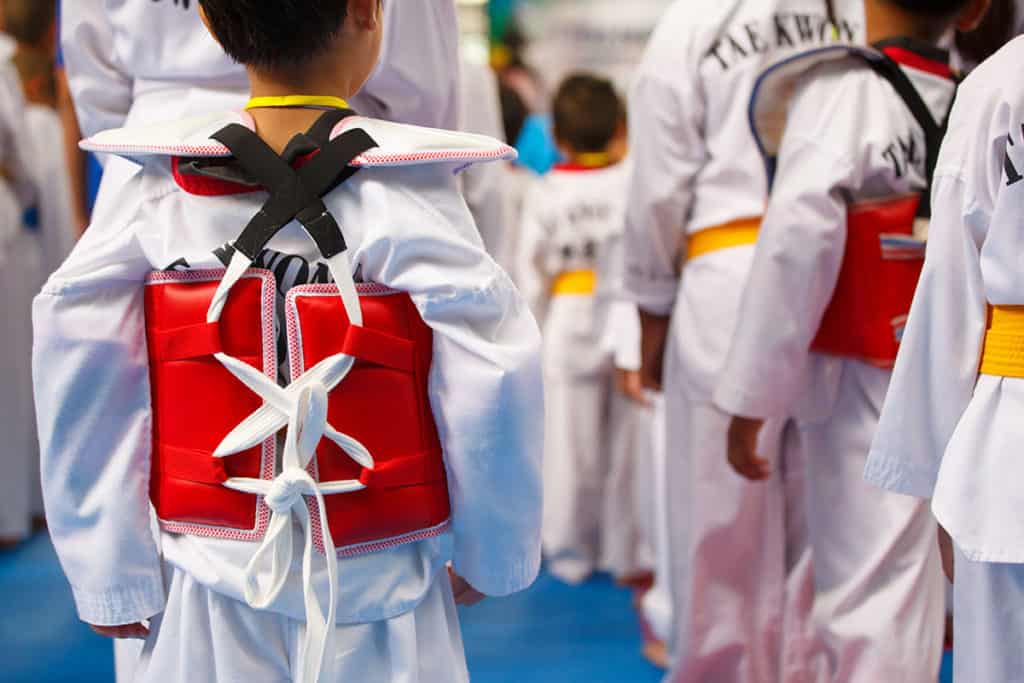
When I first considered joining a TaeKwonDo school, I was clueless about the costs. Finding reliable information was tough, so I jumped in, joined a reputable dojang, and learned the hard way. Now, I’m sharing what I’ve discovered about the costs of TaeKwonDo classes, from monthly fees to equipment, contracts, and hidden expenses.
Whether you’re a beginner or a parent eyeing classes for your kids, this guide breaks down the financial side of TaeKwonDo, including the pros and cons of signing up, to help you make an informed decision.
The Cost of TaeKwonDo Classes
TaeKwonDo class costs vary widely based on location, class frequency, and contract terms. On average, expect to pay $100 to $200 per month for group classes, typically covering two to three sessions per week. Urban centers like New York or Los Angeles often lean toward the higher end ($150–$250), while suburban or rural dojangs may charge $60–$150.
For example, a school in Connecticut might charge $64 monthly for three classes weekly, while a premium dojang in New York could hit $150 for a VIP trial month. Private lessons, offering personalized coaching, range from $40 to $100 per hour, depending on the instructor’s qualifications.
The frequency of classes impacts the price. Attending once or twice a week is cheaper, often $50–$100 monthly, while unlimited classes can push costs to $200 or more. Instructor expertise also matters—classes led by high-ranking black belts (e.g., 9th-degree grandmasters) or former competitors may command premium rates.
Facilities with modern amenities, like padded floors or fitness equipment, often charge more due to higher overhead. Some schools, especially community centers, offer lower rates ($45–$99 monthly) but may lack the personalized attention of private studios.
Initial and Ongoing Expenses
Joining a TaeKwonDo school involves more than just monthly fees. Initial costs include registration, a uniform, and sometimes basic equipment, while ongoing expenses cover belt testing and sparring gear as you progress. Here’s a breakdown of what to expect:
- Registration Fee: Most schools charge a one-time, non-refundable fee of $20–$100 to cover administrative costs. Some waive this during promotions or for family enrollments.
- Uniform (Dobok): Your first dobok, often with the school’s logo, is typically included with registration or costs $30–$100. Quality varies—basic doboks start at $30, while premium brands like Adidas run $50–$150. You can buy replacements from retailers like Amazon, but some schools require their branded doboks for testing.
- Belt Testing Fees: Testing for colored belts (white to red) occurs every 2–3 months for beginners, costing $35–$100 per test. Higher belts (e.g., blue or red) may test less frequently (every 3–6 months) but cost more, up to $150. Black belt testing is a significant expense, ranging from $400–$600, covering registration with organizations like Kukkiwon, a personalized embroidered belt, a certificate, and sometimes a plaque.
- Sparring Gear: Required for intermediate students (typically yellow belt and above), sparring gear ensures safety during controlled practice. Essential items include a chest protector ($35–$65), headgear ($20–$50), shin and foot guards ($25–$50), forearm guards ($20–$40), and a mouthguard ($5–$15). A full set costs $100–$300, depending on quality and brand. Some schools provide gear for beginners, but owning your own is recommended for hygiene and fit.
- Additional Costs: Tournaments ($50–$150 per event), specialty classes (e.g., self-defense or poomsae, $10–$50 per session), and training equipment like nunchucks ($20–$50) may apply, depending on the school’s curriculum. Family plans or bulk session purchases can reduce costs, with discounts like 10% off for a second family member or 20% for a third.
The table below summarizes average initial costs for a beginner:
| Item | Average Cost |
|---|---|
| Registration Fee | $50 |
| Uniform (Dobok) | $50 |
| Monthly Fee (2–3x/week) | $125 |
| Belt Testing (1st test) | $60 |
| Sparring Gear (Basic) | $150 |
| Total (First Month) | $435 |
These figures assume a mid-range school in a suburban area. Costs can be lower in smaller towns or higher in urban centers. Always ask about introductory specials, family discounts, or scholarships to save money.
Contracts vs. Non-Contract Options

Most TaeKwonDo schools offer two payment structures: contracts (typically 6–12 months) or month-to-month (non-contract) plans. Each has its advantages and drawbacks, so understanding them is key to choosing the right option.
A contract, often 12 months, locks you into a lower monthly rate—say, $100–$150 for two to three classes weekly. Some schools offer 2- or 3-year contracts, but you can usually negotiate for a shorter term, like 6 months. Payment is typically auto-deducted from a bank account or credit card, with discounts (up to 30%) for paying the full year upfront.
The main advantage is cost savings, especially if you’re committed to long-term training. However, contracts bind you to the term, meaning you’ll pay even if you stop attending due to scheduling conflicts or waning interest. Some schools charge penalties for early termination, so read the fine print.
Non-contract plans, often not advertised upfront, offer flexibility. You pay a higher monthly rate—$125–$200—but can cancel anytime without obligation. This is ideal for testing whether TaeKwonDo fits your lifestyle or your child’s interests. Payments are still auto-deducted, but using a credit card (as opposed to a bank account) provides recourse if disputes arise. The downside is the higher cost, which can add up if you train long-term.
My advice? Start with a non-contract plan for 2–3 months. This lets you gauge your commitment and class frequency without being tied down. If TaeKwonDo becomes a passion, switch to a contract for savings. Be wary of schools pushing long-term contracts immediately, as this may prioritize profits over student experience. Quality instruction and a supportive environment should keep you coming back, not a binding agreement.
Advantages and Disadvantages of TaeKwonDo Training
TaeKwonDo offers immense benefits but also comes with challenges. Understanding these can help you decide if the costs are worth it.
The benefits are compelling. Physically, TaeKwonDo builds strength, flexibility, and endurance through its high kicks and fast strikes. It’s a full-body workout that improves coordination and agility, especially for kids who may struggle with traditional sports. Mentally, it fosters discipline, self-control, and confidence, with the belt system providing clear goals.
The philosophy—rooted in courtesy, integrity, and perseverance—shapes character, making it popular for children as young as three. Sparring and self-defense training teach practical skills in a safe, controlled setting, boosting confidence in real-world scenarios. Socially, dojangs create a supportive community, connecting students with shared interests. For families, group classes or parent-child sessions strengthen bonds.
However, there are downsides. The financial commitment is significant, with monthly fees, testing costs, and gear adding up quickly—potentially $1,500–$2,000 in the first year for frequent training. Time demands are another hurdle; attending 2–3 classes weekly, plus practicing at home, can strain busy schedules.
Physical risks, though minimized with proper gear, exist during sparring, especially for beginners learning control. Some schools, dubbed “belt mills,” prioritize profits by rushing students through tests, diluting the martial art’s integrity. Contracts can also trap you into paying for classes you no longer attend, and hidden fees (e.g., mandatory tournament participation) may surprise you.
Weighing these factors is crucial. For me, the discipline and community outweighed the costs, but I’ve seen newcomers sign year-long contracts only to quit after a month when the initial excitement faded. Starting with a trial or non-contract option helps mitigate this risk.
Tips to Save on TaeKwonDo Costs

To make TaeKwonDo more affordable, consider these strategies:
- Look for introductory specials, like free trial classes or discounted first months (e.g., $69 for six weeks with a free uniform).
- Ask about family discounts, which can save 10–30% for multiple enrollees.
- Buy used or budget-friendly gear from retailers like Amazon, but ensure it meets safety standards. Avoid overpriced school-branded equipment unless required.
- Inquire about scholarships or financial aid, especially at community-based dojangs.
- Purchase class bundles (e.g., 12 sessions upfront) for discounts, but only after confirming your commitment.
- Check social media or local mailers for seasonal promotions, often offered during back-to-school or holiday periods.
Final Thoughts
TaeKwonDo is a rewarding martial art that builds physical skills, mental resilience, and a sense of community, but it’s not cheap. Expect to spend $100–$200 monthly on classes, plus $200–$500 upfront for registration, uniforms, and gear. Belt testing and black belt certification add significant costs over time, with a first-year total easily reaching $1,000–$2,000 for dedicated students.
Contracts offer savings but limit flexibility, while non-contract plans let you test the waters at a higher monthly rate. The benefits—fitness, discipline, and confidence—are substantial, but so are the time and financial commitments.
My biggest takeaway? Don’t rush into a long-term contract. Try a non-contract plan or trial period to ensure TaeKwonDo fits your life. Delay buying sparring gear until you’re ready to spar, typically at yellow belt or higher. Research local schools, compare pricing, and prioritize quality instruction over flashy facilities. With the right approach, TaeKwonDo can be a life-changing investment without breaking the bank.

